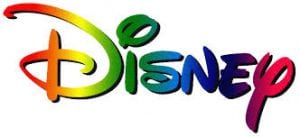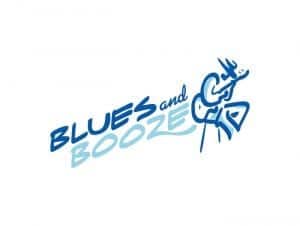Inn short the entertainment industry have some of the most-recognized brands in our culture. Audiences easily recognize the Universal symbol, the MGM lion, and other entertainment brands – and entertainment brand recognition is often global rather than regional. In our increasingly homogenized world, we all end up viewing the same entertainment.
What does that mean for entertainment companies? To begin with, it means that they must do an effective job of creating a recognizable brand that accurately represents who they are and what they do. Even if a company is releasing a wide variety of content, it’s still important to have a solid brand that lets audiences know what to expect when they see your company name.
Image and The Entertainment Industry
In large part, entertainment branding is about image. When you think about famous entertainment brands, whether those brands belong to movie studios, record labels, or even amusement parks, you probably associate them with an overall experience. You must keep the public’s image of your company in mind when creating your brand.
Famous Entertainment Brands and Why They’re Effective
To get an idea of what effective branding can do for your company, let’s look at a couple of famous entertainment brands to see what they’ve done.
Disney is one of the most famous brand names in the world. In fact, in 2016, London-based Brand Finance named it the most powerful brand in the world, with a global reach that few other companies could hope to match. How did they do it? They started with great content and built the brand from there. Of course the Disney logo, rendered in that iconic font, is a piece of it – but so are Mickey Mouse’s instantly-recognizable ears. Beyond all of that, though, the thing that has made Disney into a branding powerhouse is that the company has, over the course of decades, released high-quality family entertainment. People know what they’re getting when they go to see a Disney film.

Appealing To All Ages
The Lego brand is, like Disney, recognizable worldwide. It is second only to Disney in its power, and has moved far beyond its original reputation as a toymaker to include entertainment and branded content of different.
A big part of Lego’s success has been the company’s ability to combine pop culture with a do-it-yourself core that is appealing to both parents and kids. Of course the Lego logo is very recognizable too, but the company’s real gift has been in its ability to keep up with changing technology and maintain its relevance to new generations of children.
What you can see from both examples is that the single most important element of branding when it comes to entertainment is delivering the kind of content that consumers want to see. If you can do that, then the rest of your branding message will fall into place.
Logo Considerations for Entertainment Companies
Now let’s review some of the most important logo considerations for entertainment companies. Content may come first, but that doesn’t mean you can afford to take it easy when it comes to picking the best logo for your company.
Effective logo design starts with shapes. What do you want your logo to convey? Many film companies use images of film, spotlights, or other symbols associated with entertainment. Others use images to convey their attitude about entertainment. The symbols you choose combined with the overall shape of your logo send a powerful message about who you are as a company.
Bold Entertainment Logo Fonts
Fonts for entertainment companies tend to break the conservative mold used by companies in other industries. It’s not uncommon for entertainment companies to opt for bold and graphic fonts that are out of the ordinary way. Disney’s fun cartoon font is one example, and Paramount’s flowing script is another.
The colors you choose play an important role in branding, too. Entertainment companies sometimes choose bold colors as a way of standing out and creating excitement. However, sometimes more subdued colors can work too. This is a logo that we designed for a blues bar. We use two shades of blue combined with bold script and a cartoonish depiction of a guitar player.
The entertainment logo tells anyone who sees it what to expect:

Of course, the entertainment industry may also include video game manufacturers, event planning companies, and even photographers. The goal in all cases is to let potential customers know the type of entertainment you provide as soon as they come into contact with your logo.
Audience Participation
One of the keys to effective entertainment branding is getting in touch with your audience. That’s important for any company, but it’s a must for any entertainment company.
How to Know Your Target Audience
For some entertainment companies, like Disney or Nickelodeon, identifying a target audience is easy. Both companies produce content aimed at children, although Disney tends to take more of a whole-family approach while Nickelodeon’s content is less likely to appeal to adults. Either way, their target audience is clearly defined.
For other entertainment companies, honing in on a target audience can be tricky. A party planning company, for example, might plan both corporate and private events. In such cases, it may be necessary to identify multiple targets and then craft separate branding strategies for each one.
Creating a Brand Personality
Once you have identified your target audience, the next step is to create a brand personality. Your brand’s personality is what you will use to determine your brand’s voice and image. In the case of Walt Disney, one might look at Mickey Mouse as the symbol of the brand’s voice. It’s a kid-friendly voice that’s inclusive, warm, and funny.
An entertainment company that planned corporate functions or produced highbrow plays would necessarily have a very different brand personality than one producing content for kids. The more focused you are, the easier it will be to create a distinctive brand. If your company creates a wide variety of content you may need to create multiple voices to use in promotions.
Marketing Tips for Entertainment Companies
Marketing an entertainment company represents some unique challenges. Audience participation can and should be an important factor. Just as you rely on the audience showing up for your content, you should look to them to help give life to your marketing.
Consider using polls and quizzes to connect with your audience. Social media sites like Facebook and email software like MailChimp make it easy to reach out directly to your audience and find out what they want. It’s a low-cost version of market research and one you can use to your advantage.
Content Marketing For These Entertainment Industry
There are few audience members who don’t appreciate a peek behind the scenes of their favorite entertainment. Content marketing strategies that may be useful include cast and crew interviews, tours of a set, or even a glimpse into the creative process. You should mix up the formats you use for your content. Videos, photographs, and even infographics can all be good ways to let your audience get a look at what you do.

Loyalty In n The Entertainment Industry
Rewarding fans and followers in the entertainment industry is another good way to increase brand loyalty. A lot of entertainment companies give out freebies to their followers. For example, you might have a contest where the winner gets a signed movie poster or dinner with a cast member. Alternatively, you could give away a gift certificate to your store. The incentives you offer should be based on your target audience and what they’re most likely to want.
Entertainment Industry And Social Media Posting
Social media posting and the entertainment industry is an extremely effective method to use for building anticipation for upcoming events or the release of new content. Regular posting with teasers about what you’re working on or sneak peaks can help get your audience excited. The recent marketing campaign for Disney’s live action Beauty and the Beast is a great example. They’ve leaked images of star Emma Watson in Belle’s iconic dress and glimpses of the design process for the Beast as a way of getting audiences on board. Another good example was the marketing campaign for JJ Abrams’ film Cloverfield, which gave up very little information about the film but still managed to create a huge buzz prior to its release.
Unique Social Media Accounts For The Entertainment Industry
Creating unique social media accounts for your content is another good way to connect with audiences. If you’re planning a high-profile event or releasing a new song, why not create a Facebook page for it or add a Pinterest board where you can share graphics? This technique allows you to micro-target audiences so that people who might be interested in one piece of content but not another can follow along as they choose.
The marketing techniques you choose can make a big difference in the way audiences and customers perceive your work. You may also want to consider creating a mobile app and encouraging users to generate content.
Conclusion
Branding for the entertainment industry poses some special challenges, but the key is knowing who your target audience is and then doing whatever is necessary to engage them. If you can accomplish that, then marketing success will follow. Check out some cool website templates for more inspiration.
